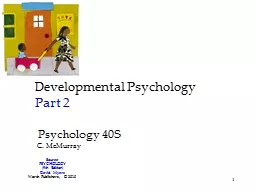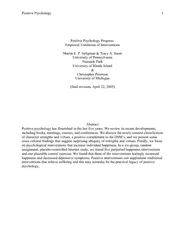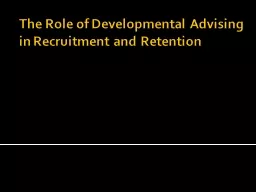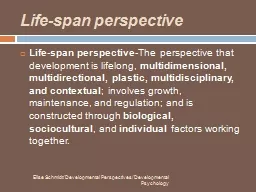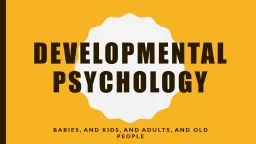PPT-1 Developmental Psychology
Author : danika-pritchard | Published Date : 2016-07-27
Part 2 Psychology 40S C McMurray Source PSYCHOLOGY 9th Edition David Myers Worth Publishers 2010 Social EmotionalDevelopment Socialization the process of learning
Presentation Embed Code
Download Presentation
Download Presentation The PPT/PDF document "1 Developmental Psychology" is the property of its rightful owner. Permission is granted to download and print the materials on this website for personal, non-commercial use only, and to display it on your personal computer provided you do not modify the materials and that you retain all copyright notices contained in the materials. By downloading content from our website, you accept the terms of this agreement.
1 Developmental Psychology: Transcript
Download Rules Of Document
"1 Developmental Psychology"The content belongs to its owner. You may download and print it for personal use, without modification, and keep all copyright notices. By downloading, you agree to these terms.
Related Documents

